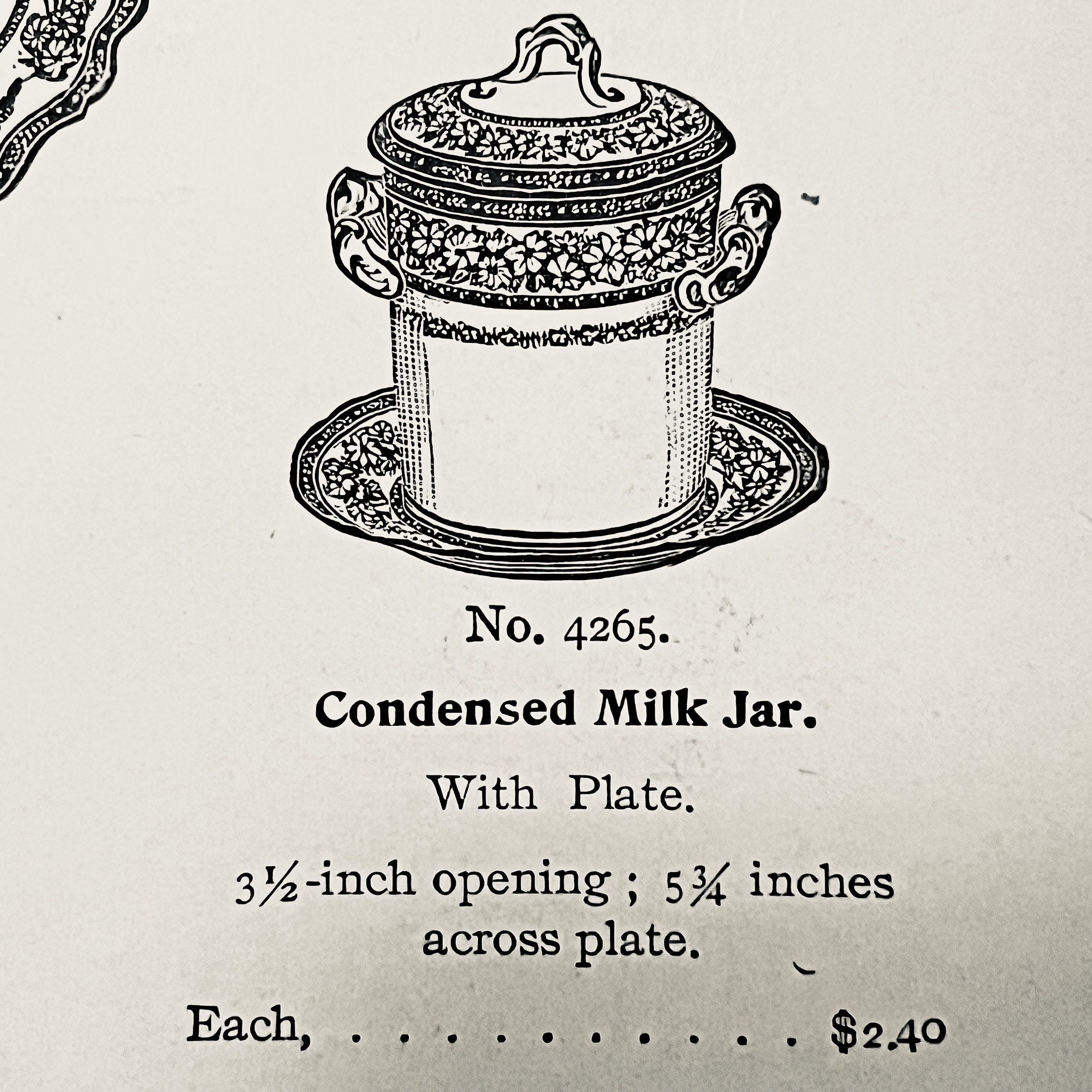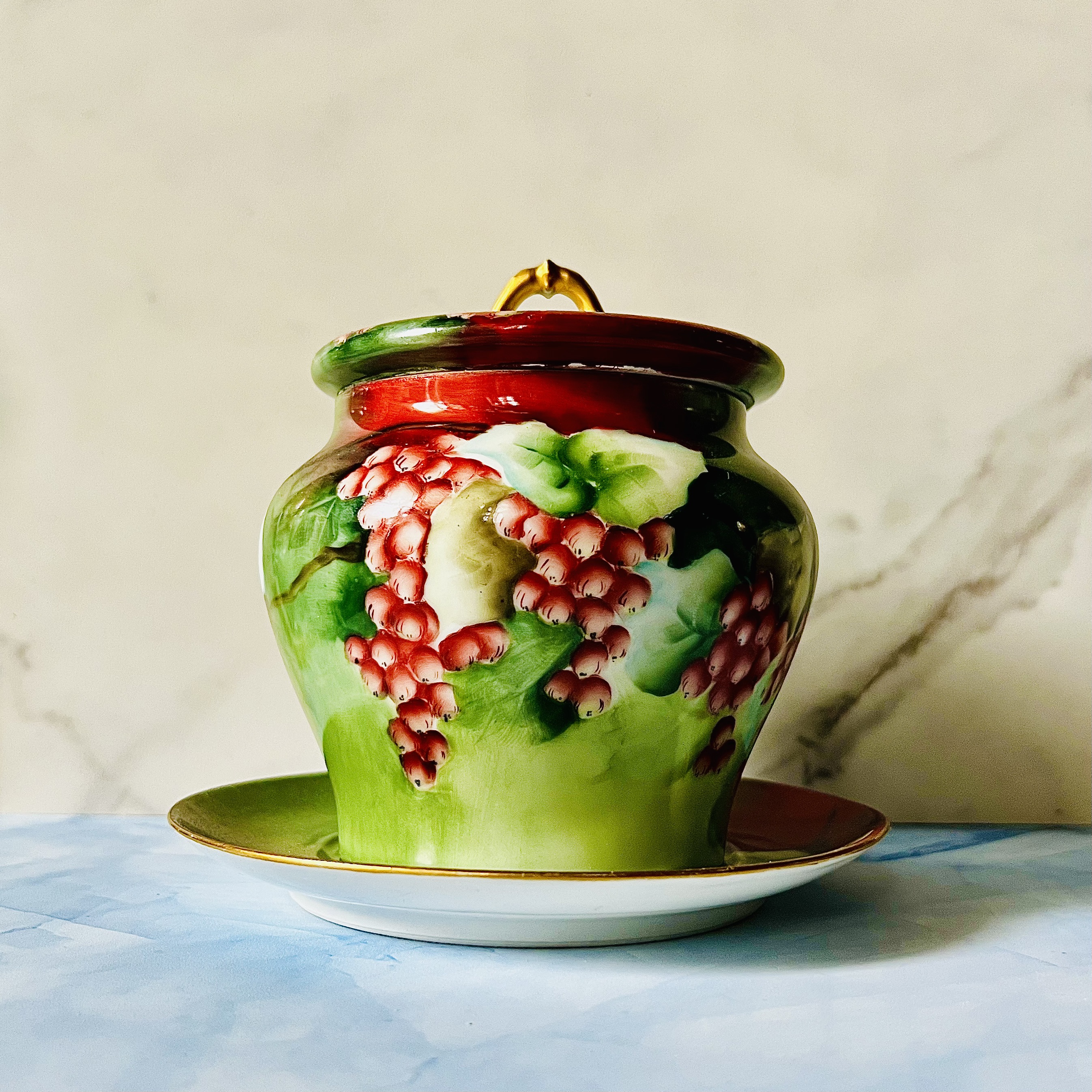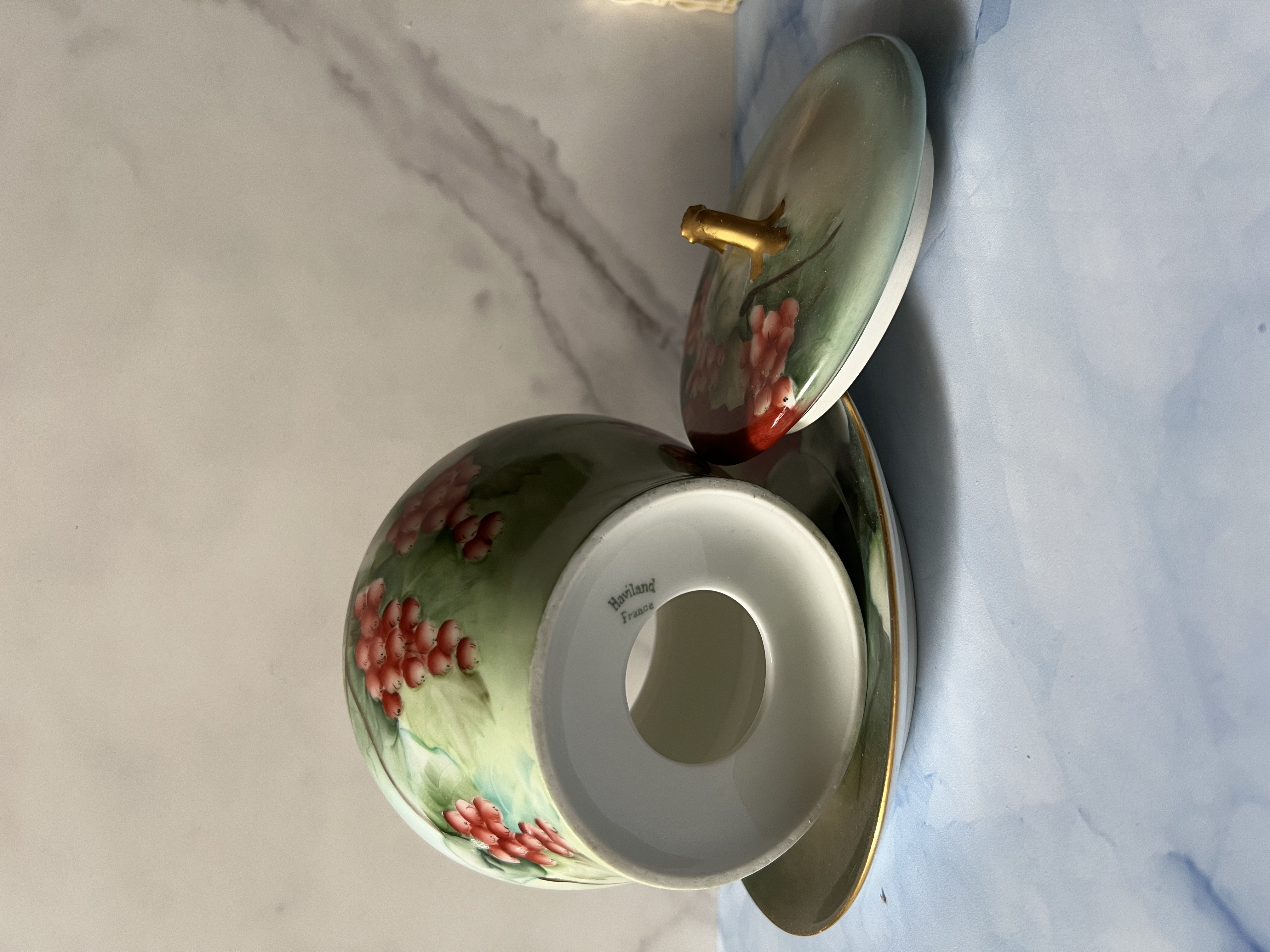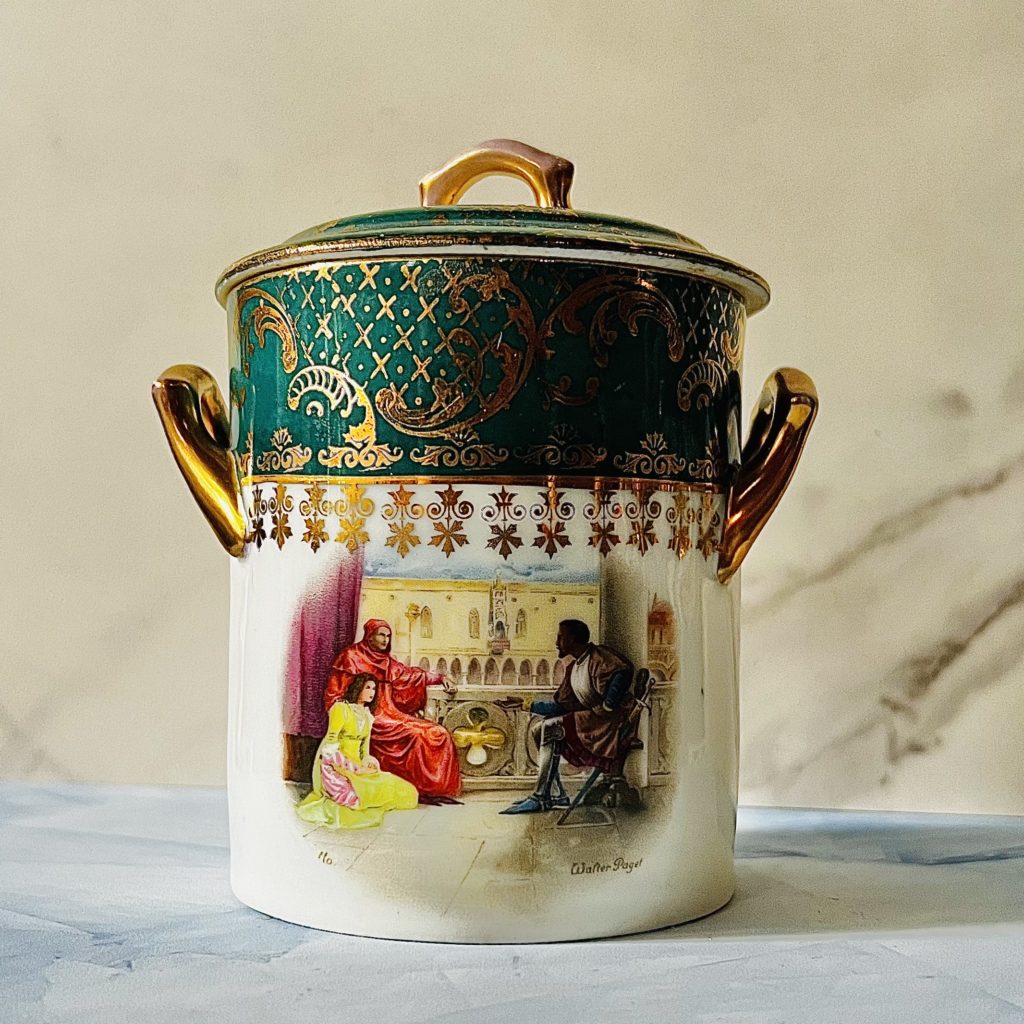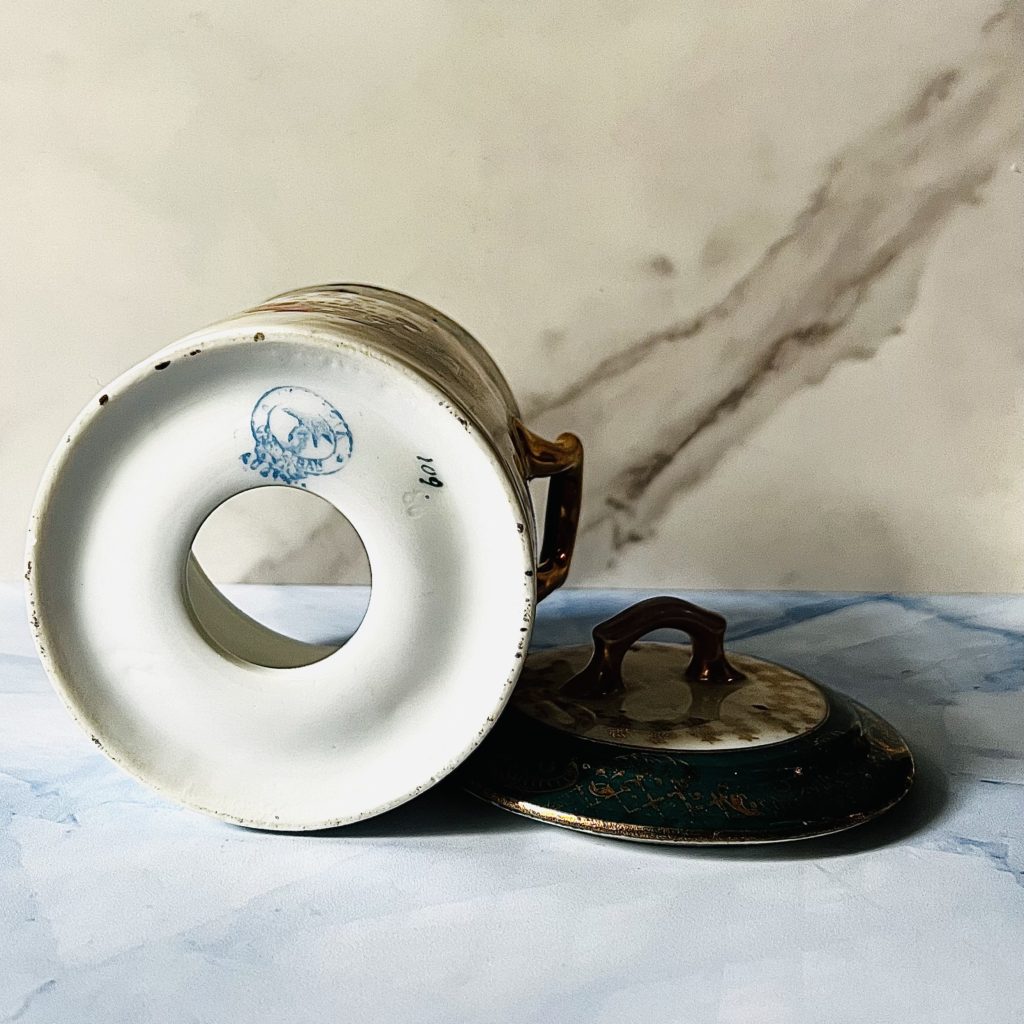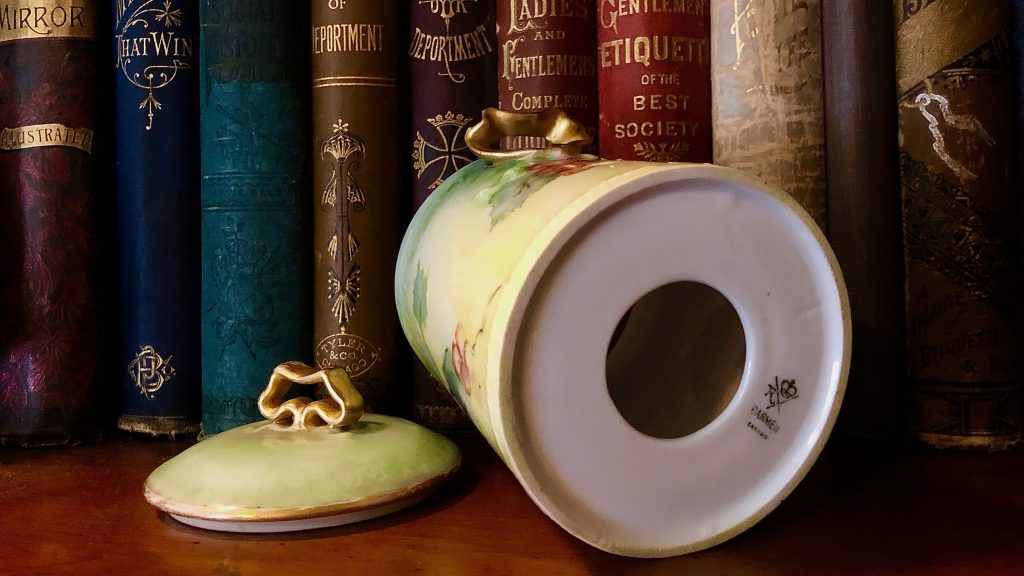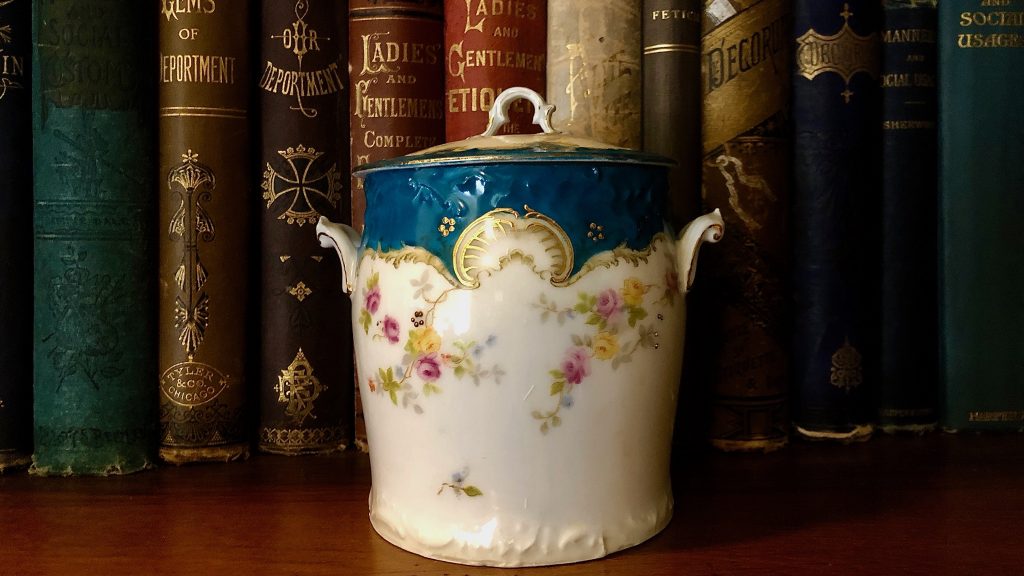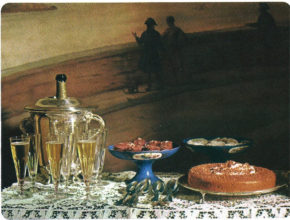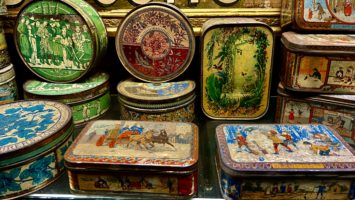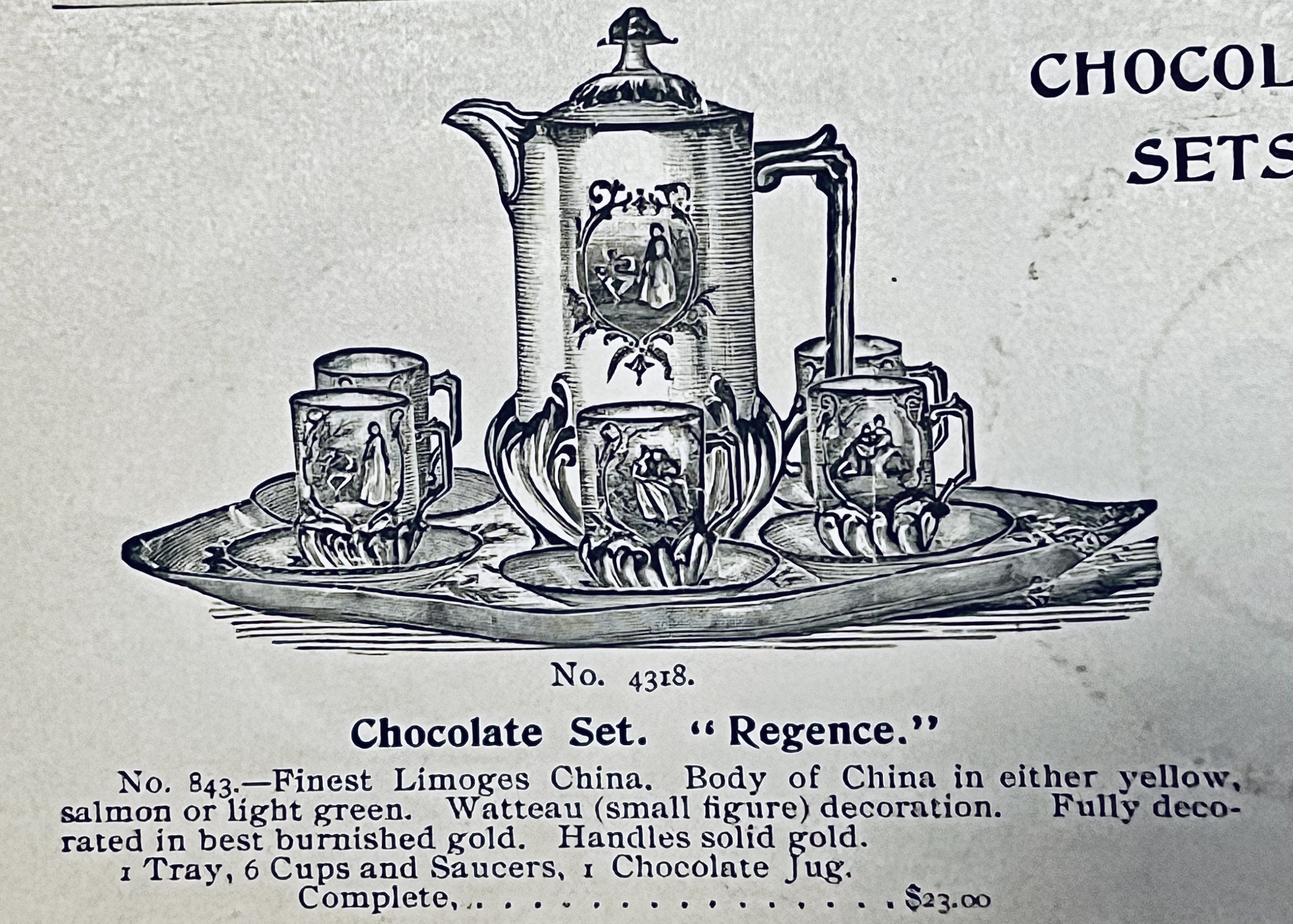When canned goods became popular prior to the turn of the century, they were a luxury good. As they were mass produced and became available to all, a quandary arose. What should one do with cans that would be consumed in one, (or nearly one) sitting? Placing the milk in a pitcher for one family sitting was wasteful and would add to the washing up, but the idea of putting a naked can on the table was unthinkable to the turn of the century mind.
Condensed milk was one of these items. In a time before refrigeration, a can of evaporated or sweetened condensed milk was a lifesaver. It could be placed on the table at breakfast and used for coffee or tea, it could be used when making dishes in a chafing dish. One has only to look at period condensed milk advertisements to see the plethora of ways in which a can could be utilized and because of this, Condensed milk sets were developed.
Sets of condensed milk containers contained from three to five pieces, the container, a lid and an under-plate were the norm. Some sets also contained a liner and/or a spoon. The can could be placed in the pretty container and no one needed to ever see the unsightly tin. Each container had a hole at the bottom to push the can out without having to tilt the can and lose any of the contents.
I haven’t often seen these containers in the wild. Partly because on the west coast we have fewer of these turn of the century items in general. I have yet to see a set with all five pieces as they weren’t common in their day, so are very rare now. When using the liner, one would pour either the contents of the can into the liner, (as it has no hole) or use the container for jam, chutney or other condiments. The liner was included provide flexibility so that when you weren’t using it for sweetened condensed milk, you could still display it on your table with something else.
Three piece sets where the norm, though now you will often find the jar and lid, but no underplate. The lack of an underplate decreases the value of the container substantially. The most expensive versions of condensed milk containers are by makers such as Limoges because finer tableware makers did not generally include these in their catalogs, writing them off as fads. They were correct on the whole as there was only a roughly thirty year period these were produced in.
